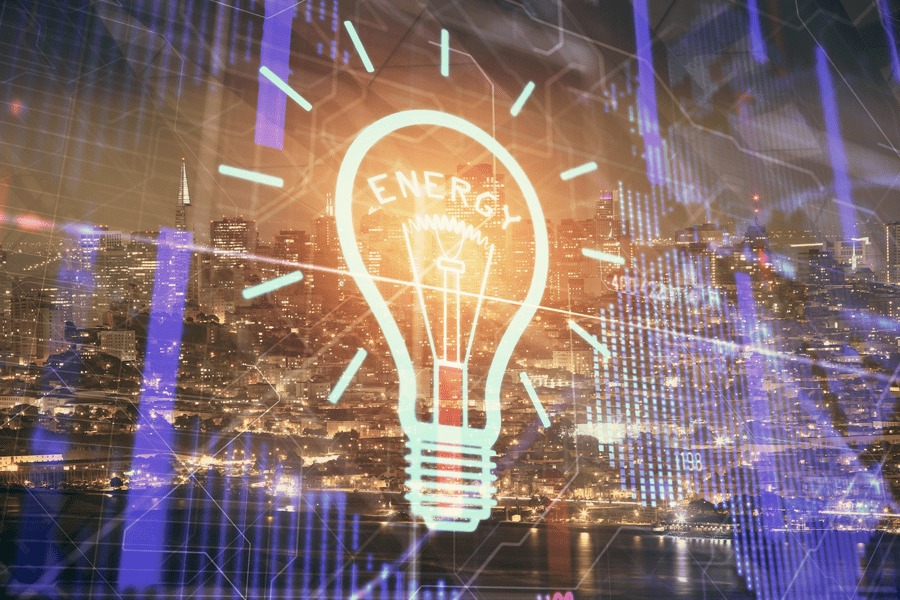Amid the ongoing global energy crisis, the built environment is seeking ways to minimize its environmental impact. This effort requires investing in and using next-generation energy saving technologies to reduce consumption and lower costs.
Installing these solutions in existing structures may temporarily disrupt business operations, but the deployment of cutting-edge energy technologies in the building sector can lead to significant long-term benefits.
Five Next-Gen Energy Saving Technologies
The commercial building sector accounts for 40 percent of energy consumption and 74 percent of generated electricity in the United States annually. This also produces fossil fuel combustion and contributes to global warming and poor air quality.
Decarbonization has been at the forefront of mitigating climate change with the adoption of next-gen energy-saving technologies to improve efficiency and comfort. By implementing these five innovative solutions to reduce energy, buildings can boost resilience, reduce susceptibility to outages, and decrease costs.
1. AI-Powered Smart Thermostats
Smart thermostats have been around for some time. However, as artificial intelligence (AI) and machine learning algorithms improve, integrating these solutions with existing technologies has inspired even greater energy efficiency.
Google’s 4th Generation Nest Learning Thermostat uses AI to memorize heating and cooling preferences faster than previous versions. Its Smart Schedule feature remembers the most commonly selected temperatures and uses sensors to detect movement, automatically altering the temperature within one hour. The new Google Nest also considers local weather conditions, overriding commands to enhance indoor comfort and prevent condensation.
The 4th Generation Nest is not the only solution on the market. Other AI-powered smart thermostats optimize hospitality management by attaining 50 percent energy savings in hotel operations.
2. Energy-Efficient HVAC
Next-gen heating, ventilation and air conditioning (HVAC) transform building energy efficiency by integrating optimized system configurations and employing features like radiant heating and cooling and zoned climate management.
According to one study, thermal zone systems lessen energy consumption by 21 to 42 percent more than non-zoned systems. These solutions are easily integrated into new construction and retrofitted buildings, enabling smart sensors and wireless AI controls that learn occupancy routines and automatically alter settings.
High-efficiency compressors with variable-speed drives can further enhance the energy efficiency of innovative HVAC systems. Many can reduce energy consumption by 35 percent or more, dramatically lowering operating costs.
3. Water-Source Heat Pumps
Water-source heat pumps use electricity to transmit heat between locations, offsetting the power needed to generate heat directly. The U.S. Department of Energy says these types of heat pumps are two to three times more energy-efficient than conventional models.
This next-gen energy-saving innovation draws heat from ambient air, moving it at much higher temperatures to heat stored water, similar to refrigerators, but in reverse. Building managers can buy a water-source heat pump with the storage tank and resistance heating components already built in or update an existing storage water heater with a more efficient system.
4. AI-Enhanced Predictive Maintenance for Energy Systems
Predictive maintenance relies on Internet of Things (IoT) sensors to monitor equipment health in real time. Rather than notifying repair specialists of current equipment issues, it uses predictive analytics to accurately predict future problems and highlight maintenance needs. This allows technicians to avoid technical issues, reducing breakdowns and operational disruptions. It also prolongs equipment life spans.
Machine learning algorithms aid predictive maintenance by analyzing historical patterns of equipment failures so that repairs or replacements transpire before faulty performance becomes an even greater issue.
5. Smart Glass with Dynamic Tinting
Conventional windows with inadequate glazing account for 30 percent of heat-related energy use, amounting to 25 percent of building costs. Likewise, the excessive use of air conditioning has an 80 to 90 percent impact on climate change. While windows deliver ventilation, aesthetic appeal, and noise and visual comfort, they also raise high energy demand and costs.
Smart windows with dynamic tinting are an impressive feat in energy-efficient building design. The windows use electrochromic glazing to respond to environmental circumstances, such as adjusting opacity and the amount of natural light and heat entering a structure.
The glass darkens during peak sunlight hours to limit solar heat gain and reduce the need for air conditioning. Conversely, the glass increases transparency during evening hours and cloudy days to avoid the need to turn on artificial lights.
Integrating Cutting-Edge Energy Savers With Minimal Operational Disruption
Operational disruptions can hurt businesses, even for something positive like upgrading to next-gen energy-efficient systems. Fortunately, there are ways to mitigate and minimize these disruptions while benefiting from cutting-edge energy savers.
Assessment and Strategy
Comprehensive energy auditing highlights a building’s potential for savings and makes it easier to determine which technologies are a priority. Part of this assessment and planning stage is analyzing each system’s technological and financial feasibility, including initial costs, potential savings and repayment terms.
Selection and Customization
Building managers should select technology that can easily merge with existing infrastructure. It is also critical to choose scalable solutions. Vendors can customize different energy-saving equipment to meet specific operational requirements for optimal efficiency.
Communication and Training
Stakeholders – employees, customers and managers – should understand the benefits of next-gen energy savers, from reducing a building’s carbon footprint to financial savings. Relaying potential disturbances and outlining mitigation strategies during installation are also important. Anyone with access to the equipment should also undergo proper training on using the systems.
Incremental Implementation
It is best to implement the technology in stages, starting with systems in underutilized and less critical areas of business operations. For more in-depth installations, technicians should schedule the work after hours or over weekends. A step-by-step rollout will also make it easier to make adjustments as needed.
Performance Tracking and Optimization
The most effective way to tell whether energy-saving technology produces results is to track its performance with real-time monitoring. Insights will then identify areas for improvement. Establishing an employee feedback system will also enable input for recognizing issues and opportunities for further optimization.
Disruption-Minimizing Strategies
Additional strategies for minimizing operational disruption while deploying next-gen energy savers include wireless sensor networks and control systems. Additionally, technicians can easily install, adjust and upgrade modular technology without replacing large equipment.
Incorporating remote control systems will allow specialists to maintain, adjust and troubleshoot the technology without having to tend to the issues on-site. Integrating backup systems is another way to ensure continuous operations should problems arise.
Next-Gen Energy Savers Are the Future of Energy Efficiency
There is no time to waste in addressing the energy crisis. Fortunately, next-gen energy-saving solutions are making it easier for buildings to minimize their power use, improve air quality, and enhance their resilience. As technical advancements continue paving the way for new technologies, investments in these devices will only demonstrate positive outcomes.
Emily Newton is the Editor-in-Chief of Revolutionized, an online magazine discussing the latest industry innovations and trends.






